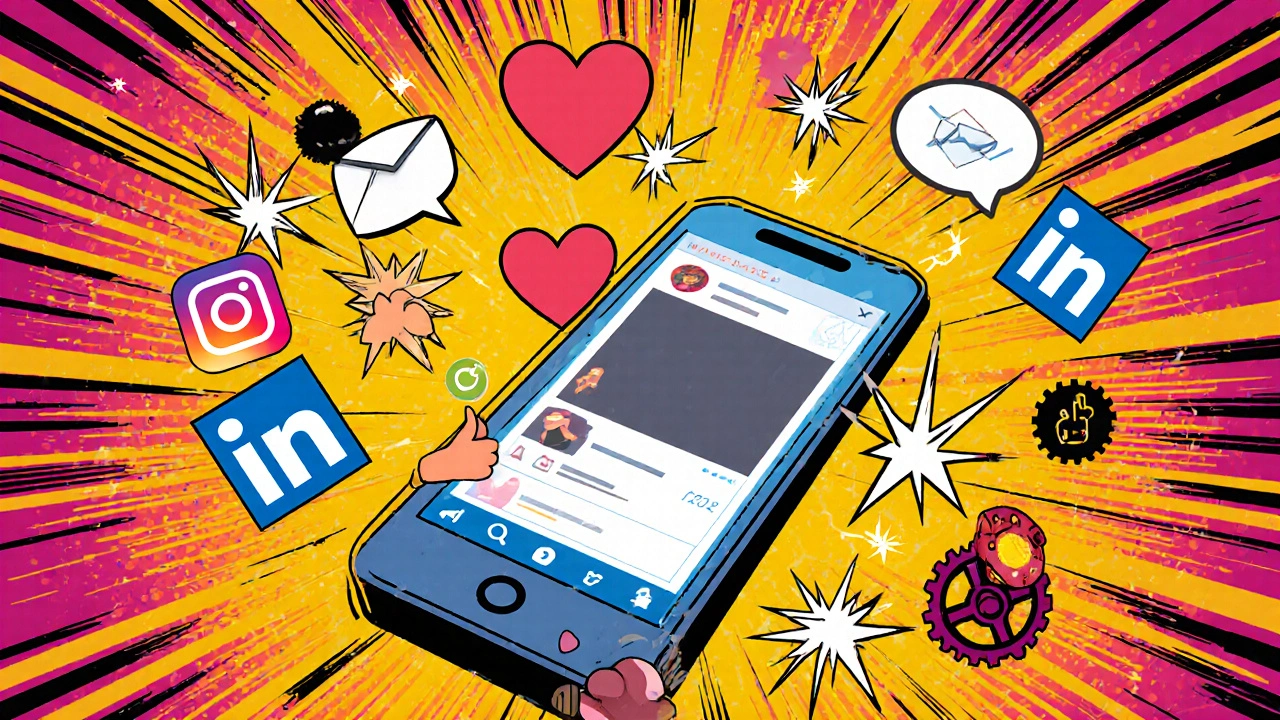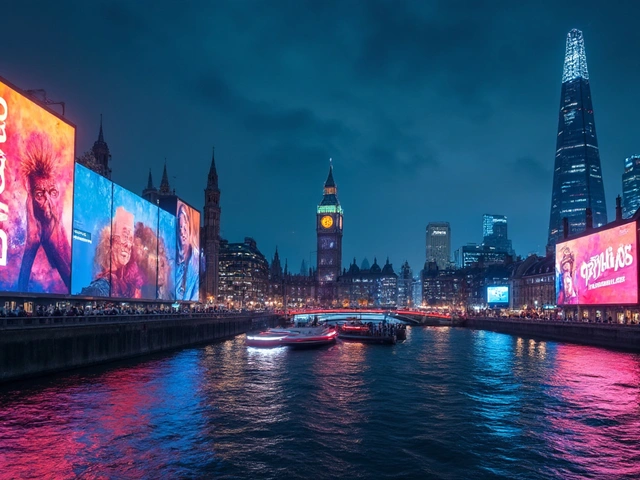Buzz Potential Calculator
Calculate Your Content's Viral Potential
Determine how likely your content is to generate buzz using proven marketing principles from the article.
Viral Potential Assessment
Online Marketing is the practice of promoting products or services through digital channels such as websites, email, social platforms, and search engines. If you’re aiming to get people talking, share‑worthy, and ready to convert, you need more than a handful of ads. You need a plan that sparks conversation, fuels curiosity, and turns casual browsers into loyal fans.
Why "Buzz" Matters in the Digital Age
Buzz isn’t just hype; it’s social proof amplified by algorithms. When a post gets shares, comments, or mentions, platforms reward it with extra reach. That feedback loop can propel a small brand into viral territory overnight. The key is to design every touchpoint so it feels worth sharing.
Core Channels and How to Leverage Them
Every successful buzz‑building campaign blends multiple channels. Below is a quick rundown of the most effective ones.
- Content Marketing is the creation and distribution of valuable, relevant, and consistent content to attract and retain a clearly defined audience. Blog posts, videos, and infographics act as the backbone for shareable moments.
- Social Media Marketing is the use of platforms like Instagram, TikTok, and LinkedIn to promote a brand and engage with its audience. Real‑time interaction and trending hashtags are your best friends here.
- Email Marketing is the practice of sending targeted messages to a subscriber list to nurture leads and drive conversions. Personalized subject lines and limited‑time offers can spark urgency that ripples outward.
- Search Engine Optimization (SEO) is the process of optimizing website content so it ranks higher in organic search results. High‑ranking evergreen pieces become reference points that earn backlinks and social shares.
- Influencer Marketing is a partnership where creators with large followings promote a brand’s product or service. Even micro‑influencers can ignite niche buzz when their audience trusts them.
- Pay‑Per‑Click (PPC) Advertising is a paid model where advertisers pay each time a user clicks on their ad, commonly used on Google Ads and social platforms. Strategic remarketing boosts the longevity of a viral surge.
- Marketing Automation is software that automates repetitive marketing tasks like email sequencing and social posting. Automation keeps the momentum alive without manual burnout.
Crafting Shareable Content that Sparks Conversation
Shareability isn’t random; it follows a few proven patterns:
- Emotion First: Content that elicits surprise, joy, or even outrage gets noticed. Think of a bold statistic, a funny meme, or a heartfelt story.
- Visual Appeal: Videos under 60 seconds, eye‑catching graphics, and carousel posts perform best on mobile‑first platforms.
- Utility: How‑to guides, cheat sheets, and templates provide immediate value, encouraging saves and shares.
- Storytelling: Position your brand as the protagonist’s sidekick. Use a clear narrative arc (problem → solution → outcome).
Combine these ingredients with a clear call‑to‑action (CTA) that tells the audience exactly what to do next-whether it’s tagging a friend, using a branded hashtag, or entering a giveaway.

Paid Amplification Tactics to Accelerate the Buzz
Organic reach is powerful, but a well‑placed ad budget can turn a modest spike into a full‑blown wave.
- Boost Top‑Performing Posts: Identify content that’s already getting traction and push it with a modest daily spend to reach look‑alike audiences.
- Retarget Engaged Viewers: Use pixel‑based retargeting to show follow‑up offers to users who watched a video or clicked a link.
- Run Time‑Sensitive Giveaways: Limited‑time contests combined with paid reach create urgency and encourage rapid sharing.
Automation & Measurement: Keeping the Conversation Alive
Buzz isn’t a one‑off event; it’s a cycle of creation, distribution, feedback, and iteration.
- Set Up Real‑Time Alerts: Use tools like Google Alerts, Brand24, or native platform listening to catch mentions as they happen.
- Track Core Metrics: Reach, engagement rate, share‑to‑view ratio, and referral traffic from social channels give you a pulse on buzz health.
- Automate Follow‑Up Sequences: Trigger email or SMS messages to users who engaged with your viral post, turning curiosity into conversion.
When you spot a dip, tweak the headline, switch the visual, or revamp the CTA-then let the automation handle the repeat distribution.
Owned, Earned, and Paid Media: Quick Comparison
| Aspect | Owned Media | Earned Media | Paid Media |
|---|---|---|---|
| Control | Full | Limited | High (budget‑driven) |
| Cost | Low (production) | Zero (organic) | Variable (CPC/CPM) |
| Credibility | Brand‑centric | Third‑party endorsement | Sponsored perception |
| Scalability | Steady | Exponential if viral | Instant with spend |
For a buzz campaign, blend all three. Use owned channels to seed the story, earned media to add credibility, and paid tactics to give it the lift it needs.

Launch Checklist: From Idea to Viral Moment
- Define a clear, emotionally charged hook.
- Choose 2‑3 primary channels (e.g., TikTok + Email + Influencer).
- Create a visual asset that works both square and vertical.
- Write a concise, action‑oriented caption with a branded hashtag.
- Set up tracking URLs (UTM parameters) for every link.
- Schedule organic posts and allocate a modest boost budget.
- Monitor mentions in real time and respond within 1 hour.
- Run A/B tests on headline or thumbnail during the first 24 hours.
Follow this list and you’ll have a solid framework to spark that much‑wanted conversation.
Common Pitfalls and How to Avoid Them
- Over‑Promising: If the buzz builds expectations you can’t meet, backlash follows. Keep promises realistic.
- Ignoring Negative Feedback: Dismissed complaints can snowball. Address criticism publicly and quickly.
- Skipping Optimization: Launching without tracking is like shooting in the dark. Always embed UTM codes and set up conversion goals.
- One‑Size‑Fits‑All Content: Different platforms demand different formats. Repurpose, don’t repost identical assets.
Next Steps: Turn Knowledge into Action
Now that you understand the mechanics, pick one product or event and draft a 30‑second teaser following the hook‑emotion‑CTA formula. Test it on a small audience, boost the top performer, and watch the conversation grow.
How long does it take for a buzz campaign to go viral?
There’s no exact timeline. Some posts explode within hours; others need a few days of steady amplification. The key is rapid response-engage the audience as soon as the first shares appear.
Can small businesses create real buzz without a big budget?
Absolutely. Authentic storytelling, clever use of user‑generated content, and micro‑influencer partnerships can generate high‑earned reach at low cost. Budget should focus on strategic boosts rather than blanket spend.
What metrics best indicate a successful buzz campaign?
Look at share‑to‑view ratio, organic reach lift, hashtag usage volume, and referral traffic to your landing page. Combine these with conversion data (sign‑ups, sales) to measure ROI.
How should I handle negative comments that appear during a viral surge?
Acknowledge the issue publicly within an hour, offer a solution or explanation, and move the conversation to a private channel if needed. Prompt, transparent responses preserve credibility.
Is it worth investing in a dedicated marketing automation tool for buzz campaigns?
Yes, especially if you run multiple campaigns a month. Automation handles follow‑up emails, scheduled reposts, and real‑time reporting-freeing you to focus on creative strategy.





